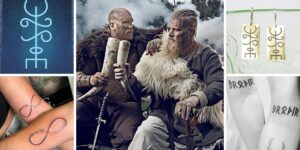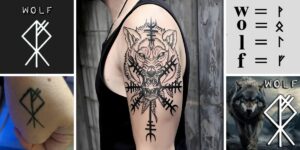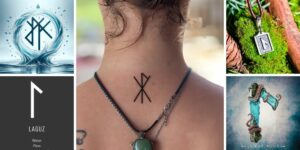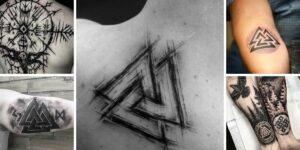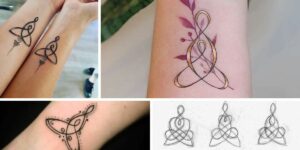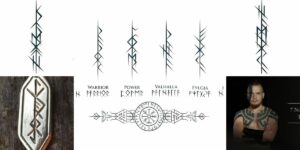Norse mythology weaves a intricate tapestry of symbols that reflect the Viking perspective on life, death, and the afterlife. Among these, Norse symbols for death hold a particular allure, embodying the culture’s complex relationship with mortality. From the enigmatic Valknut to the chilling imagery of Hel, Norse goddess of death, these symbols carry profound meanings tied to fate, honour, and the journey beyond life. The Vikings revered death not as an end but as a transition, whether to the glorious halls of Valhalla or the shadowy depths of Helheim. This article delves into the heart of Viking beliefs, exploring key symbols like the Valknut symbol, Hel Norse goddess symbols, and the Viking rune of death. By examining these icons, we aim to uncover the spiritual and cultural significance of death in Norse paganism, offering insight into a world where mortality was both revered and celebrated.
The Concept of Death in Norse Mythology
In Norse mythology, death was not a finality but a passage to various afterlife realms, each shaped by one’s deeds. Warriors who died heroically aspired to Valhalla, Odin’s hall, where they would feast until Ragnarök. Conversely, those who died of natural causes or dishonour might descend to Helheim, ruled by Hel, Norse goddess of death. Helheim was a cold, shadowy realm, distinct from the fiery hell of Christian tradition. Hel herself, described as half-living and half-dead, embodied the duality of existence.
Norse paganism viewed death through a lens of honour and fate. Burial rites, such as ship burials or cremations, reflected the belief in equipping the deceased for their journey. Warriors were often buried with weapons, symbolising their readiness for Valhalla. According to Death in Norse Paganism (Wikipedia), these rituals underscored the Vikings’ respect for death as a transformative force, guided by gods like Odin and Hel, whose symbols became potent markers of mortality.
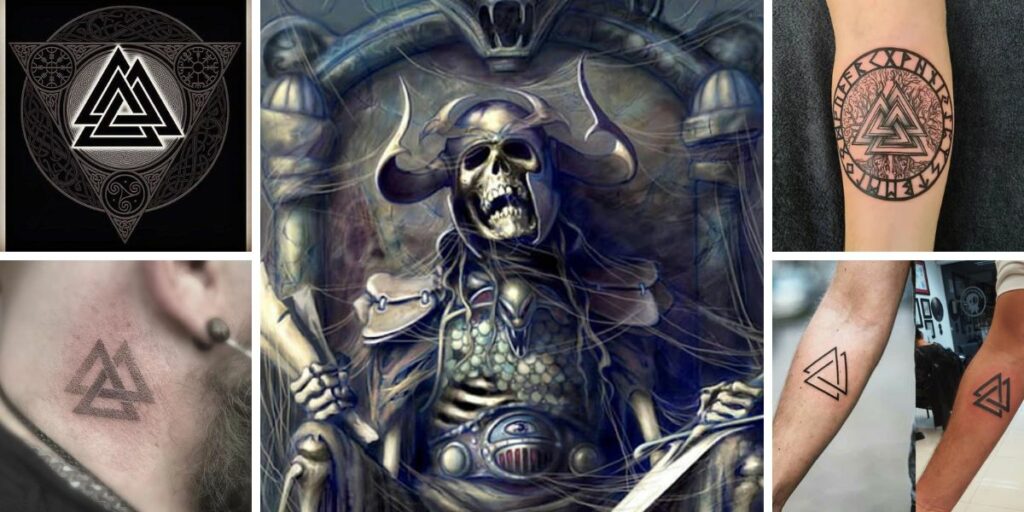
Key Norse Symbols for Death
The Valknut
The Valknut, a trio of interlocked triangles, is perhaps the most iconic Norse symbol for death. Associated with Odin, the Allfather, it is often linked to fallen warriors and the concept of fate. Found on runestones and grave goods, the Valknut symbol is thought to represent the cycle of life, death, and rebirth, or the power of Odin to bind and unbind souls. Its presence in funerary contexts suggests a connection to the transition between worlds, making it a quintessential Viking symbol of death.
Hel’s Symbols
Hel Norse goddess symbols evoke her grim domain. Depicted with serpents, decay, and a half-corpse visage, Hel’s imagery reflects her role as ruler of the dead who did not reach Valhalla. Her symbols, often tied to the underworld’s cold and barren nature, contrast with the fiery glory of Valhalla. Artefacts like amulets bearing serpent motifs may have invoked her protection or acknowledged her authority over the deceased.
Norse Runes for Death
Nordic runes for life and death carry layered meanings. The rune Tiwaz (ᛏ), linked to the war god Tyr, signifies honour and sacrifice, often tied to heroic death. Hagalaz (ᚺ), representing hail and destruction, evokes the chaotic forces that lead to mortality. Isa (ᛁ), symbolising ice, suggests stagnation or the stillness of death. These Norse runes of death were not merely letters but carried spiritual weight, used in inscriptions to honour the dead or ward off malevolent forces.
Viking Death Staves and Protective Marks
The Viking death stave refers to magical symbols, or staves, used in Norse rituals for protection, curses, or guidance in the afterlife. These intricate designs, often carved into wood or stone, were believed to influence spiritual forces. According to Viking Style, some staves were inscribed on burial sites to protect the deceased from restless spirits or to curse grave robbers. Unlike the Greek symbol for death, such as Thanatos’ sword, which directly represented the god of death, Viking staves were multifaceted, blending protection with invocation. While Greek symbols were often singular in purpose, Viking death staves served as both spiritual tools and cultural artefacts, reflecting the Norse belief in an active afterlife.
The Valknut vs. Other Death Symbols
The Valknut stands apart from other Norse symbols of death due to its deep connection to Odin and the warrior ethos. Unlike Mjölnir, Thor’s hammer, which occasionally appeared in funerary contexts to invoke protection, the Valknut symbol was explicitly tied to death and fate. Mjölnir represented Thor’s might and was more commonly a symbol of blessing, whereas the Valknut’s triangular form suggested the inescapable cycle of existence. Odin, as a Norse god of death symbol, guided souls to Valhalla, and the Valknut’s presence on runestones reinforced this role. Other symbols, like serpentine motifs linked to Hel, focused on the underworld rather than the heroic ascent associated with the Viking symbol for death.
Misconceptions and Modern Interpretations
In modern times, Norse symbols for death like the Valknut and Viking rune of death have been adopted in neo-paganism and pop culture, often with skewed meanings. The Valknut, for instance, is sometimes misused as a generic “Viking” symbol without its funerary context. Similarly, Nordic runes for life and death are often romanticised in tattoos or jewellery, ignoring their historical ties to specific rituals. Viking Style notes that while these symbols resonate in modern spirituality, their original meanings were deeply rooted in Norse cosmology, not universal emblems of rebellion or mysticism. Understanding the Norse death symbol in its historical context ensures respect for Viking culture and avoids oversimplification.
Conclusion
Norse symbols for death offer a window into the Viking worldview, where mortality was a journey shaped by honour, fate, and divine oversight. From the Valknut symbol’s ties to Odin’s realm to Hel Norse goddess symbols evoking the underworld, these icons reveal a culture that embraced death as part of life’s cycle. Exploring Nordic runes for life and death and Viking death staves further enriches our understanding of Norse paganism. For those intrigued by these ancient symbols, further study into Viking mythology offers endless depth. Which Norse death symbol resonates most with you, and what does it reveal about your own perspective on life and death?
Nordic Rune for Friendship: Meaning, Symbols, and Viking Tattoo Ideas
Table of ContentsThe Concept of Death in Norse MythologyKey Norse Symbols for DeathThe ValknutHel’s SymbolsNorse
Jul
Nordic Rune for Wolf: Symbols, Meanings & Viking Connections
Table of ContentsThe Concept of Death in Norse MythologyKey Norse Symbols for DeathThe ValknutHel’s SymbolsNorse
Jul
Laguz Rune: The Viking Rune for Water – Meaning, Healing, and Symbolism
Table of ContentsThe Concept of Death in Norse MythologyKey Norse Symbols for DeathThe ValknutHel’s SymbolsNorse
Jul
Viking Symbols for Death: Exploring Norse Mythology’s Darkest Icons
Table of ContentsThe Concept of Death in Norse MythologyKey Norse Symbols for DeathThe ValknutHel’s SymbolsNorse
Jun
Nordic Symbol for Mother and Son: A Deep Dive into Meaning
Table of ContentsThe Concept of Death in Norse MythologyKey Norse Symbols for DeathThe ValknutHel’s SymbolsNorse
1 Comment
Jun
Nordic Rune for Warrior: Symbols of Strength and Protection in Viking Culture
Table of ContentsThe Concept of Death in Norse MythologyKey Norse Symbols for DeathThe ValknutHel’s SymbolsNorse
Jul


